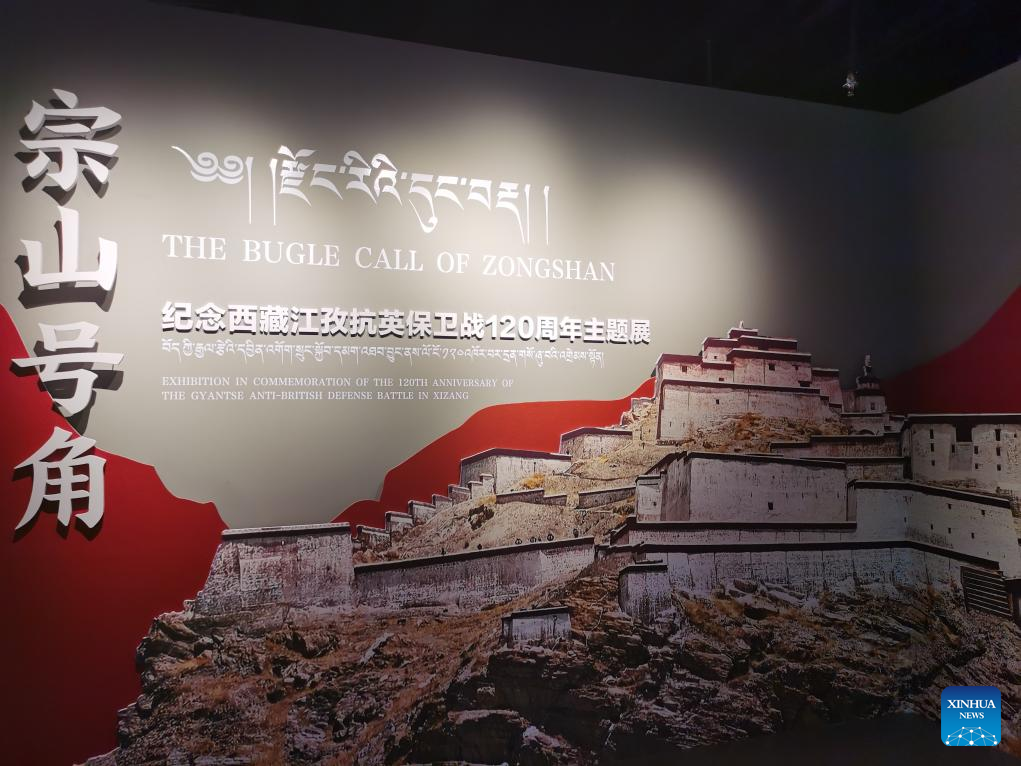


An exhibition spotlighting Xizang's 1904 resistance against British invaders is held at the Museum of Tibetan Culture in Beijing, capital of China, on Aug. 2, 2025.(Xinhua/Zuo Chang)
BEIJING, Aug. 7 (Xinhua) -- With heavy smoke billowing from a fort, a throng of Tibetans, armed with bows and arrows, charge bravely ahead toward a large army of foreigners brandishing rifles and preparing to attack the fort.
This dramatic digital simulation is part of an exhibition at the Museum of Tibetan Culture in Beijing, spotlighting Xizang's 1904 resistance against British invaders.
"Those who took up arms were monks, herders and peasants. Ordinary people were defending their homeland," said Dawa Tsering, curator of the museum, in an interview with Xinhua.
Despite being vastly outgunned, the Tibetans fought bravely, driven by patriotism and a determination to protect their land.
"By sharing Xizang's history, we highlight the collective efforts of all ethnic groups in building a unified country," Dawa Tsering added.
The museum, established in 2010, plays a vital role in preserving and showcasing Tibetan history and culture. It houses artifacts from the Qinghai-Tibet Plateau and historical records documenting the Chinese central government's governance over Xizang.
Another popular exhibition here focuses on the centuries-old tradition of the reincarnation of Tibetan Living Buddhas, a process only valid when recognized by the Chinese central government.
This exhibition, featuring over 100 artifacts displayed through images, videos and digital projections, clearly outlines the origin and development of the reincarnation system.
"The exhibitions are awe-inspiring," reads a visitor's comment in the museum's guest book. "They enabled me to better understand the history and religious traditions of Xizang."
Beyond exhibitions, the museum also offers hands-on activities, enabling visitors to experience Tibetan culture firsthand.
Visitors can learn to write in Tibetan, create Thangka paintings, or craft tsha-tshas (Buddhist clay sculptures). They can also participate in Tibetan New Year celebrations in Beijing, according to Zhang Li, an official of the museum.
"We organize events in neighborhoods, schools, shopping malls, and even army camps and temples to engage as many people as possible," said Dawa Tsering. "The more people learn about Xizang, the more they realize it's not as mysterious as they once believed."
点击右上角![]() 微信好友
微信好友
 朋友圈
朋友圈

请使用浏览器分享功能进行分享
